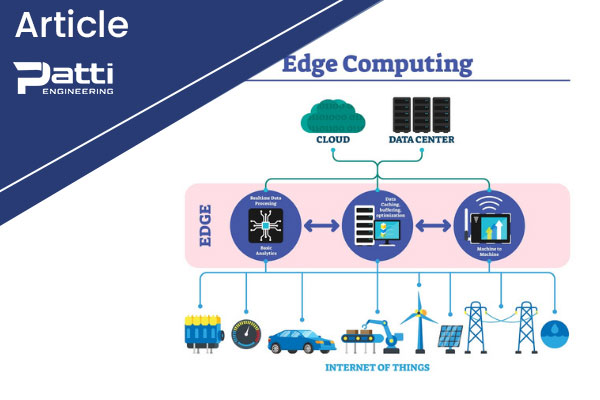
What Can Go Wrong When You Underestimate The Edge
We’ve all heard about the importance of The Cloud when it comes to digitalization and modernizing your facility. The Edge, however, may be the most overlooked and underestimated part of the Industry 4.0 puzzle.
What is The Edge?
The Edge consists of computing devices that are the link between on-the-floor devices and The Cloud. These devices pre-process data before sending it to The Cloud. This pre-processing includes simple computations such as mean, median, highest and lowest points, etc. While the data is often sent to the cloud, it can also be sent to on-site servers for data analytics. Edge devices can also receive feedback from The Cloud and send that information back to the machines.
Why is The Edge Important?
If you’re looking to make sense of Big Data, these edge computing devices are critical. An incredible amount of data points can be generated from your process – but you likely don’t want to send it all to the cloud. Edge computing devices will limit the amount of data that needs to be sent to The Cloud (or servers) for analysis.
Why Limit Data Sent to the Cloud?
There are three main reasons why you might want to limit the amount of data you are sending to The Cloud.
- Security: When data is exceptionally sensitive, it might be prudent to add an extra layer of security by not sending raw data off the line. By preprocessing on The Edge, you can “anonymize” the data a bit.
- Cost: Some Cloud providers charge by the amount of data. When you reduce the data sent, you can significantly reduce your cost.
- Network speed: As you start looking at additional data points, or increasing the frequency of data collection, the amount of data can increase exponentially. For example, one model we ran recently generated over 8,000 raw data points in 18 seconds. To avoid taxing your internet connection, you may want to reduce the amount of data sent.
Common Mistakes When Using The Edge
-
Undersizing Your Edge Devices
When you haven’t worked with data analytics for things like predictive maintenance or facility optimization before, you may not know what data you will need yet. Often, teams will estimate they need just a few pieces of information. Then, in our brainstorming sessions, that number will quickly balloon. Ultimately, as we’re able to refine the data models, the amount of data needed will tick back down, but the capacity of the edge devices might be higher than you expect – at least at first. We advise that when planning to purchase edge devices – size up.
For example, in one project, we were looking to detect tool breakage before it caused a problem. Initially, we estimated that we’d need to collect data every 20 milliseconds. At the time, edge devices were only capable of detecting up to every 100 ms. Now, there are devices that can collect up to every 1 ms! Make sure you are choosing a device that will provide the correct accuracy.
-
Undersizing Your System Architecture
Similar to undersizing the capacity of the devices, also beware of undersizing your system architecture. We recently had to adjust a new system when we initially installed one device for every 5 machines. We recommend planning for one device for each machine or possibly every two machines. If something goes wrong on one machine- a connectivity issue or some other hardware glitch – that can bog down the data processing for all of the machines that are connected.
-
Not Preparing Your Network
This may seem obvious, but having a solid, reliable network is critical to making The Edge function. If internet speeds are slow, or the connection drops out, it can dramatically impact how the system functions. No specialized requirements are necessary, but if the facility has previously been air-gapped, or the network is outdated, it may be necessary to modernize the network first.
-
Underestimating the Importance of The Edge devices
The Edge is not the glamorous part of digitalization. It doesn’t make nice charts, or send helpful alarms, or (on its own) allow you to work from the beach. It can be easy to overlook. These devices are not particularly complicated, but they do require maintenance, including Windows updates, etc.
Edge computing devices are the workhorses of a modernized, digitalized facility. By paying them proper attention and giving yourself a little wiggle room with their size, they can make your new system more efficient and cost-effective.
If you’d like to talk to a Patti Engineer about making the Edge work in your facility,
Related categories: Blog Industry 4.0 / Digitalization



